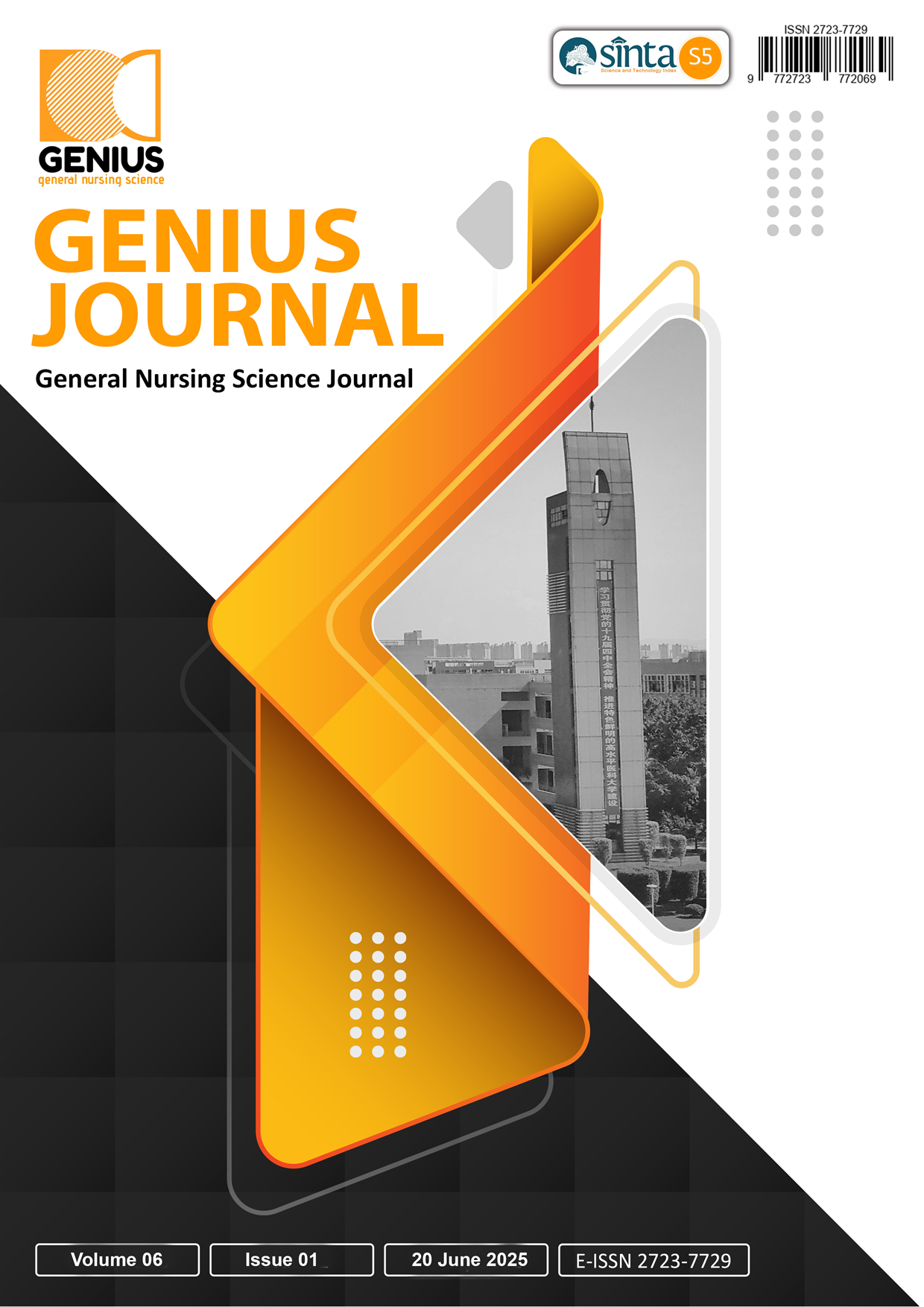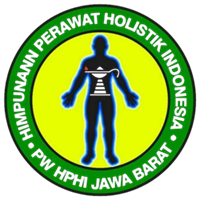Association Between Infection History and Complex Nutrition Intake with Wasting Incidence in Toddlers
DOI:
https://doi.org/10.56359/gj.v6i1.476Keywords:
Toddlers, MPASI, History of Infection, WastingAbstract
Background: Wasting in toddlers is a form of acute malnutrition characterized by rapid weight loss and low weight-for-height z-scores, which can severely impact physical growth and cognitive development. Factors such as a history of infection and inappropriate complementary feeding practices have been identified as potential contributors.
Objective: This study aimed to analyze the relationship between infection history and the provision of complementary feeding (MPASI) with the incidence of wasting among toddlers aged 2–5 years in the working area of Sidomulyo Health Center, Samarinda.
Method: A cross-sectional study with a quantitative correlational approach was conducted. A total of 168 toddlers were selected using stratified random sampling. Data were collected through structured questionnaires and anthropometric measurements, and analyzed using the Chi-Square test.
Results: The results showed that 25.6% of the toddlers experienced wasting. Toddlers with a history of infection were found to be at significantly higher risk, with an odds ratio (OR) of 13.85 (p = 0.000). Additionally, toddlers who received complementary feeding before the age of 6 months were 8.9 times more likely to experience wasting (p = 0.000; OR = 8.9). Both variables showed a statistically significant association with the incidence of wasting.
Conclusion: The study found a significant relationship between infection history and complementary feeding practices with the incidence of wasting among toddlers. Strengthening maternal education, timely feeding, and infection prevention is essential to reduce the risk of wasting in early childhood.
Downloads
References
Abera L, Dejene T & Laelago T. (2020) Magnitude of stunting and its determinants in children aged 6–59 months among rural residents of Damot Gale district; Southern Ethiopia. BMC Research Notes. 11(1): 1-6
Adiputra et al. (2021) Correlation of Quantitative Research Using the Cross Sectional Approach
Afandi. (2020) Research Design: Definition, Function, Classification, and Form. Jakarta, Garmedia
Alfani, A. (2021). Relationship between Infection History and Wasting Incidents in Toddlers in the Sidomulyo Health Center Work Area. Health Journal, 1(4), 123-135.
Auliya C, Handayani, OWK, Budiono I. (2022) Nutritional status profile of toddlers reviewed from the topography of the residential area (study in the Eseha area and the Jepara Regency Ridge area). Unnes Journal Of Public Health. 4(2)
Aritomang, SOB, Thomson, P., & Lestari, W. (2022). Risk Factors for Wasting in Toddlers at UPTD Puskesmas Luahagundre Maniamolo South Nias District In 2019. Journal of Healthcare Technology and Medicine, 8(2), 952–961.
Briend A, Khara T, Dolan C. (2023) Wasting and stunting—similarities and differences: policy and programmatic implications. Food and nutrition bulletin. 3(Suppl 1): S15-S23
Desyana. (2023). Risk Factors for Wasting in Toddlers in Jepara Regency. Journal of Nutrition College, 8(4), 369-379.
Dewey, Adu-Afarwuah (2021) Systematic Review Of The Efficacy and Effectiveness of Complementary Feeding Interventions in Developing Countries
Depok City Health Office. (nd). Provision of MP-ASI for Toddlers. Depok City Health Office
Diniyyah SR, Nindya TS. (2021) Energy, protein and fat intake with the incidence of malnutrition in toddlers aged 24-59 months in Suci Village, Gresik. Amerta Nutrition. 1(4): 341-350
Evi Hasnita, Resty Noflidaputri (2023) Factors Affecting the Incidence of Wasting in Toddlers Aged 36-59 Months in the Rao Health Center Working Area, Pasaman Regency. Journal of Health Sciences
Evin, ENS, Khotimah, S., Astuti, SAP, & Sukmawati, S. (2021). Education on the Importance of the First 1000 Days of Life in an Effort to Improve Children's Nutritional Status to Prevent Wasting. Altifani Journal of Research and Community Service, 1(4), 352–358.
Fernandes, AAR (2020) Quantitative Research Methodology System Perspective: Revealing Novelty and Fulfilling Research Validity. Universitas Brawijaya Press.
Filia Alia Rahma, Miftahul Munir, & Lilia Faridatul Fauziah. (2024). The Relationship between Exclusive Breastfeeding, Complete Basic Immunization and Infectious Diseases in Toddlers Aged 1-5 Years with Wasting Incidents in Tuban Regency. INSOLOGI: Journal of Science and Technology, 3(2), 215–225. https://doi.org/10.55123/insologi.v3i2.3437
Hasnita, E., Noflidaputri, R., Sari, NW, & Yuniliza, Y. (2023). Factors Affecting the Incidence of Wasting in Toddlers Aged 36-59 Months in the Rao Health Center Working Area, Pasaman Regency. Jik Journal of Health Sciences, 7(1), 130.
Harding KL, Aguayo VM, Webb P. (2021) Factors associated with wasting among children under five years old in South Asia: Implications For Action. Plos One. 13(7)
Public Relations of Research and Development of Health. (2021). Pocket Book of Results of the Indonesian Nutritional Status Study (SSGI) 2021.
Imansari, D., Rizqi, ER, Lasepa, W., Wasting, K., & Ibu, P. (2024). Relationship Between Mother's Knowledge And Provision of Complementary Foods To Breast Milk (Mp-Asi) With The Incidence of Wasting In Toddlers In The Work Area of The Pusako Community Health Center. 1(3), 744–749.
Kekalih, A., Oka, I., Agung, A., Fahmida, U., & Ermayani, E. (2021). Multicenter randomized controlled trial of dietary supplement intervention for wasting children in a research protocol in Indonesia. Kekalih et al. BMC Public Health, 0, 1–9.
Ministry of Health of the Republic of Indonesia. (2020). Health Regulations Health Health Health Recommended Nutritional Adequacy Rates for Indonesian Health. Jakarta: Ministry of Health of the Republic of Indonesia
Ministry of Health of the Republic of Indonesia. (2020). Ministry of Health Performance Report 2020. Jakarta
Ministry of Health of the Republic of Indonesia. (2021). Child Growth Training Module. Directorate General of Nutrition and Maternal and Child Health, Jakarta.
Ministry of Health of the Republic of Indonesia. (2022). Stunting vs Wasting in Children. Yankes. https://yankes.kemkes.go.id/view_artikel/1673/stunting-vs-wasting-pada-anak
Ministry of Health of the Republic of Indonesia. (2022). Indonesian Nutritional Status Survey (SSGI) 2022. Data Service https://layanandata.kemkes.go.id/katalog-data/ssgi/ketersediaan-data/ssgi-2022
Lestari W. (2022) Factors Affecting Wasting in Toddlers at the Siduaori Health Center UPTD, Siduaori District, South Nias Regency. Mandira Cendikia Nursing Journal
Malwani (2021) History of Infection and Wasting in Indonesia. Journal of Health, 2(4), 134-622
Masri Singarimbun. (2021) Statistical Modeling in Reliability and Survival Analysis. Brawijaya University Press.
Masturina, ML, Salam, A., Indriasari, R., Thaha, AR, & Jafar, N. (2023). Description of family characteristics and nutritional status in toddlers. Community Research of Epidemiology (CORE), 3(2), 101–114. https://doi.org/10.24252/corejournal.vi.37731
Maulani GR., & Julianawati, T. (2022) The Effect of Providing Complementary Food and Infectious Diseases on the Incidence of Wasting in Toddlers Aged 0-59 Months in Solok City and Pariaman City. Journal of Promotive Preventive. 4(2): 88-93
Minister of Health of the Republic of Indonesia. (2020) Regulation of the Minister of Health of the Republic of Indonesia No. 2 of 2020, Jakarta: Ministry of Health of the Republic of Indonesia
Ni'mah, C., & Muniroh, L. (2022). The Relationship Between Education Level, Knowledge Level and Parenting Patterns of Mothers with Wasting and Stunting in Toddlers from Poor Families. Indonesian Nutrition Media, 10(1), 84–90. https: //doi.org/10.20473/mgi.v10i1.84-90
Nilasari. (2023). Wasting Incidents in Toddlers. Hasanudin University Repository.
Nurhartati (2022) The Relationship Between Infectious Diseases and Wasting and Underweight in Children Aged 0-23 Months in Indonesia. Jakarta
Oktavia S, Widajanti L, & Aruben R. (2020) Factors related to malnutrition status in toddlers in Semarang City in 2017 (study at the Banyumanik Nutrition Recovery House, Semarang City). Journal of Public Health. 5(3): 186-192
National Library of the Republic of Indonesia. (2021). Indonesian Nutritional Status Survey: 2021. OneSearch. https://onesearch.id/Record/IOS3504.libra-103406116001365/Description
Purwadi, H.N., Nurrika, D., Wulandari, M., Novrinda, H., & Febriyanti, H. (2023). Determinants of Wasted Among Age 6-59 Months: The Indonesia Family Life Survey 2014. Amerta Nutrition, 7(1SP), 17–24. https://doi.org/10.20473/amnt.v7i1SP.2023.17-24
Richard et al. (2020) The Impact of Childhood Diarrheal Episodes on Growth : A Systematic Review and Meta-Analysis of Global Data
Sari, EN (2022). Factors Affecting the Incidence of Wasting among Children Under Five Years of Age. Journal of Health Poltekkes Kemenkes RI Pangkalpinang, 10(1), 75–82 .
Shaputri, WE, & Dewanto, NE (2023). The relationship between maternal education and nutritional status of children aged 1 year 6 months to 2 years at Sumber Waras Hospital. Hijp: Health Information Research Journal, 27(2), 58–66. https ://myjurnal.poltekkes-kdi.ac.id/index.php/hijp%0AHIJP
Soedarsono, AM, & Sumarmi, S. (2021). Factors Influencing the Incidence of Wasting in Toddlers in the Simomulyo Health Center Work Area, Surabaya. Media Gizi Kesmas, 10(2), 237. https://doi.org/10.20473/mgk. v10i2.2021.237-245
Subroto, T., Novikasari, L., & Setiawati, S. (2021). Relationship between History of Infectious Diseases and Stunting Incidence in Children Aged 12-59 Months. Malahayati Midwifery Journal, 7(2), 200–206. https://doi.org/10.33024/jkm.v7i2.4140
Triveni, T., & Hasnita, Y. (2021). Provision of MP-ASI and Environmental Sanitation on Wasting Incidents in Toddlers Aged 0-59 Months. Proceedings of the Health Seminar …, 4(2), 44–49. https://jurnal.upertis.ac.id/index.php/PSKP/article/view/713
UNICEF Indonesia. (2020). Risk Factors for Wasting: Undernutrition and Malnutrition. UNICEF Indonesia.
UNICEF. (2020) Improving Child Nutrition The Achievable Imperative For Global Progress
UNICEF. (2023). UNICEF/WHO/World Bank Joint Child Malnutrition Estimates: Levels and Trends in Child Malnutrition. Accessed from https://data.unicef.org/resources/jme-report-2023/
Wangsa Nata, MM, & Setiadi, Y. (2023). Determinants of Wasting Incidence in Toddlers in Aceh Province in 2021. National Seminar on Official Statistics, 2023(1), 321–330. https://doi.org/10.34123/semnasoffstat.v2023i1.1619
World Health Organization. (2023). Proportion of children with wasting (weight-for-height <-2 SD). WHO Data.
Sugiyono. (2020) Quantitative, Qualitative, and R&D Research Methods. Bandung: Alfabeta.
Suwarno, RT (2023). The Effect of Providing Complementary Food on the Nutritional Status of Toddlers in the Sidomulyo Health Center Work Area. Airlangga University Repository.
Downloads
Published
How to Cite
Issue
Section
License
Copyright (c) 2025 Fathia Wianida Utami, Fatma Zulaikha, Ni Wayan Wiwin Asthiningsih

This work is licensed under a Creative Commons Attribution 4.0 International License.




















